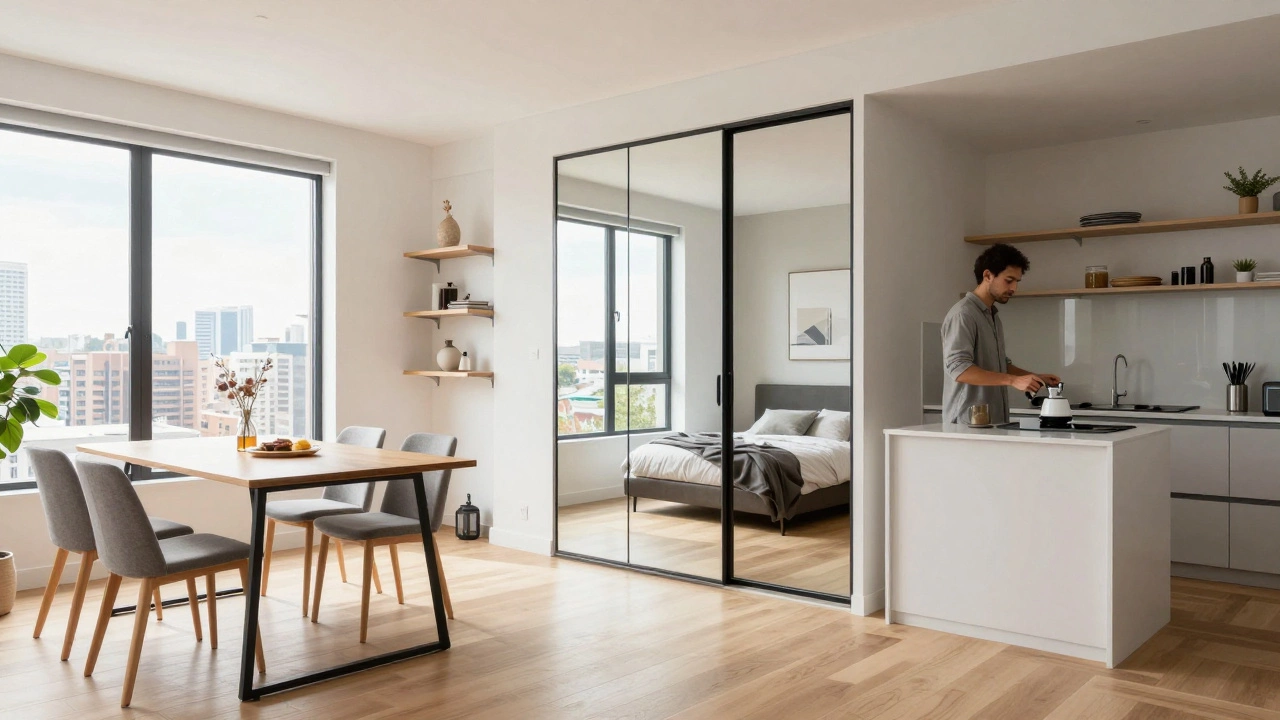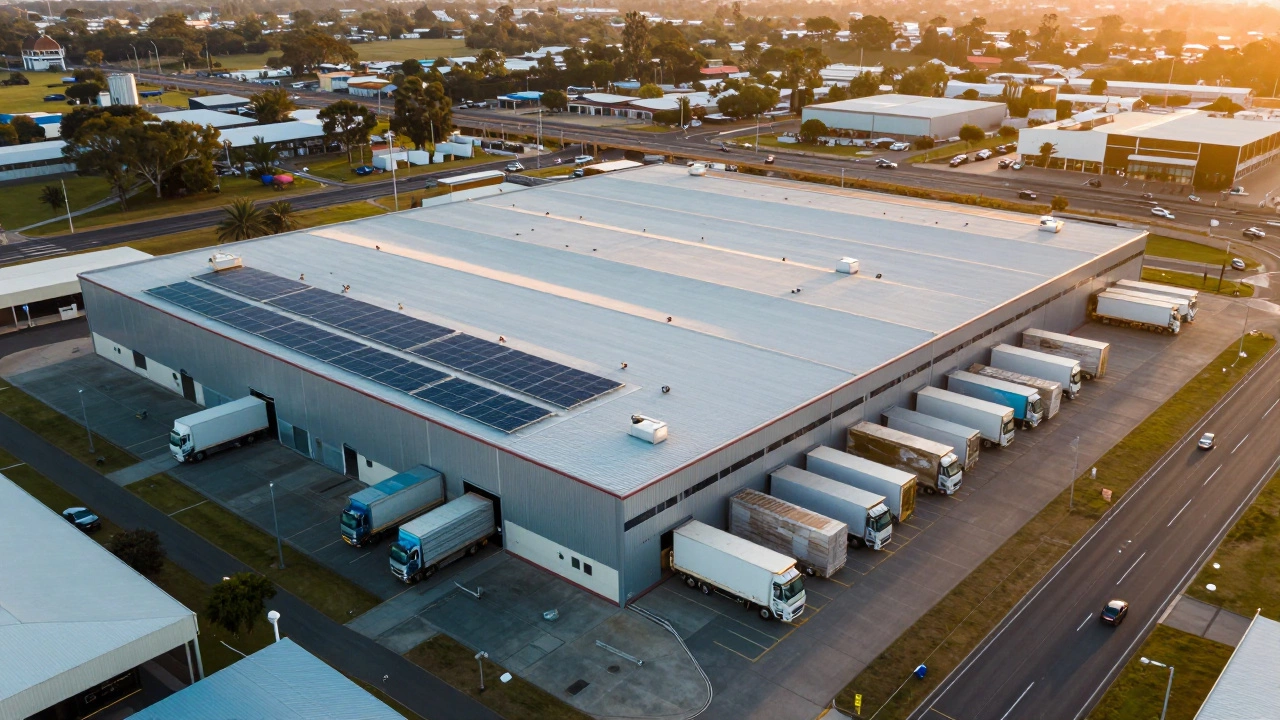Ever wondered why some landlords seem to always have money in their pockets, while others barely scrape by—or worse, end up losing cash each month? The difference comes down to knowing your numbers and setting smart, realistic targets for rental property profit. There’s way more to this game than just charging rent and hoping for the best. If you’re serious about real estate, getting clear on how much profit you actually need isn’t just important, it’s non-negotiable.
Defining Profit on a Rental Property: More Than Just Rent Minus Costs
Profit on a rental property isn’t some magical number you pull out of thin air. It’s the real, tangible cash you get after subtracting every cost tied to that property. Sounds simple, but let’s break it down, because a lot of folks get tripped up on what actually counts as an expense.
Here’s a fact: Sometimes "profit" gets thrown around loosely; some people mean cash flow, others mean overall return, and some even think about "paper profit" thanks to things like appreciation (when the property goes up in value on paper). But the metric that really matters, especially if you want to live off your portfolio or grow it safely, is monthly positive cash flow. That’s your rental income, minus mortgage, taxes, insurance, repairs, vacancy allowance, property management fees, and some other sneaky costs.
Take this as a guiding rule—if your property doesn’t bring in consistent positive cash flow, it’s just a liability. Here’s what you need to count in your math:
- Monthly mortgage payment (principal AND interest)
- Property taxes
- Building and landlord insurance
- Regular repairs and maintenance (even if nothing is broken right now, trust me… it will be)
- Allowance for vacancy (aim for 5%–10% of gross rent—empty units sneak up on new landlords)
- Property management fees (usually 8%–12% of monthly rent if you outsource)
- HOA or strata fees (if you’re in a condo or gated community)
- Occasionally: utility bills, especially if you cover water, garbage, or heat
All of this before you even touch any profit! Another overlooked factor: reserves for big-ticket replacements—like new roofs, water heaters, or appliances. Veteran landlords set aside about 5% of rent into a "CapEx" (capital expenditures) fund, so you’re not caught off-guard when stuff breaks.
How to Calculate Your Required Profit: The Key Formulas
The obvious question is: what’s a good number? If you Google this, you’ll see wild claims—"$200 a month!", "10% yield!", "Double your money overnight!". Don’t buy into hype. The answer depends on your market, your risk tolerance, and your goals. But let’s get into some formulas you’ll want in your toolkit.
First up: Cash flow. At its core, this is "rent minus all costs," and you want this number to be positive—ideally by a few hundred bucks each month. Most experienced investors won’t even look at a deal unless it clears at least $100–$300/month per unit in net, predictable cash flow. The sweet spot often cited is $200/month/unit; this gives you room for error if things go sideways.
But there’s more: savvy investors look at “Cash-on-Cash Return.” This answers, “For every rupee you put into the deal, how much did you get back this year as spendable cash?” Here’s the formula:
- Annual Cash Flow (rent minus all expenses, times 12)
- Divided by Total Cash Invested (down payment + closing costs + upfront repairs)
If your property spits out ₹1.2 lakh of cash in a year and you put in ₹10 lakh, your cash-on-cash return is 12%. Most landlords are happy with 8%–12%. Any less, and you’re better off putting your money in a safe index fund—and skipping the hassle.
Don’t overlook rental yield—it’s another way buyers compare “apples to apples.” Yield is just annual rent divided by property value, typically shown as a percentage. Good rental yields in strong markets usually hover around 6%–10%. Hot cities see lower yields, but offer better appreciation. Cold, low-demand markets sometimes have tempting high yields but come with serious risks (high vacancy, bad tenants, slow appreciation).
Here’s what a real example might look like for a typical 2BHK flat in Pune, India:
| Item | Amount (₹ per month) |
|---|---|
| Gross Rent | 20,000 |
| Mortgage Payment | 10,000 |
| Property Taxes | 1,500 |
| Maintenance & Repairs | 1,000 |
| Vacancy Allowance (8%) | 1,600 |
| Property Management | 1,800 |
| Insurance | 400 |
| Net Cash Flow | 3,700 |
Even after all these costs, the property makes around ₹3,700 a month, or ₹44,400 a year. Calculate your cash-on-cash return and see if it excites you—but don’t forget to adjust for taxes or unexpected repairs.

Factors That Influence Rental Property Profit: What Can Boost or Kill Your Margins
Your profit doesn’t just depend on rent—plenty of other factors play a big part. Let’s run through the big ones that can make or break your bottom line.
The biggest player? Location. Even in the same city, neighborhoods can vary wildly in rents, tenant quality, and vacancy rates. A unit near a tech park or college can command higher rent and attract stable tenants, whereas a property far from city centers often sits vacant longer. Remember, high-rent neighborhoods tend to have higher property prices, which can squeeze your yield unless you buy smart or negotiate well.
Next, consider property type and age. Older buildings are usually cheaper to buy, but expect more repairs—those little fixes add up. Modern flats often fetch higher rent but also come with costlier monthly maintenance fees. Studio apartments, 1BHKs, and serviced units might bring better yields but usually see more turnover.
Market cycles are another beast. During economic booms, rents skyrocket, vacancies drop, and property values rise. When the economy tanks, rents freeze or even fall, and you might have longer vacant periods. The COVID-19 pandemic, for example, wrecked the rental market in major cities—suddenly, average vacancy rates in Mumbai and Bengaluru went from 2% to 15% nearly overnight.
Financing terms also impact profit big time. A cheaper interest rate on your loan gives you fatter monthly margins. Even a 0.5% change in interest rate can swing your profit by thousands per year. Keep an eye on RBI policy changes—they hit property investors directly.
Here are some strategies for boosting your profit:
- Negotiate hard on purchase price; this is often how big investors lock in higher yields
- Add value—renovate kitchens, modernize bathrooms, or install in-demand amenities to justify higher rent
- Screen tenants rigorously to avoid missed payments or property damage
- Self-manage if possible, especially for your first property, to save management fees
- Refinance your mortgage when rates drop
- Consider short-term rentals in touristy or business-heavy cities—higher income, but higher turnover
On the flip side, beware of:
- Poor tenant screening (late rents, legal hassles, worse—personal headaches)
- Ignoring regular maintenance (those little problems turn into big expenses fast)
- Overleveraging (don’t borrow to the max if you can’t handle vacancy or repairs)
- Chasing "hot" markets just because of hype—it’s easy to buy wrong when the crowd is excited
Setting Realistic Targets and Best Practices for Long-Term Success
So, how do you decide what profit YOU actually need? Start with your own financial goals. If you want passive income to quit your job, you’ll need way more than if you’re just looking to supplement your day job. Remember, profit isn’t only about cash flow—long-term, you want appreciation and rent growth too, but don’t count on those every year. Treat them as bonus, not a guarantee.
The average profit margin (after all costs) across India in 2023-2024 was roughly 6–8% for most residential rentals, after mortgage and tax. In metro cities like Bengaluru or Mumbai, yields dropped to 2–4% as prices soared, but smaller cities like Indore, Lucknow, or Kochi clocked in above 10% for savvy landlords. Yet, don’t chase the biggest number blindly. Slow, steady, reliable cash flow beats wild bets that work once in a blue moon.
Here’s a common pitfall—new landlords forget to include taxes on their rental income. The government collects tax on about 70% of your gross annual rent (minus property tax and interest payments under certain sections), and you’ll pay tax in your current slab rate. Always consult with a trusted accountant—this is not the area to guess and hope for the best.
Got your eye on a property? Run the numbers three times: with best-case, average, and worst-case rent/vacancy/repair estimates. Don’t fudge the numbers to "make the deal work." A solid buffer—like cash-on-cash returns of 8%+ and net cash flow after reserves—is your safety net.
A final tip: compare your property to other options, including the stock market, bonds, or even REITs (real estate investment trusts, which are super liquid and headache-free—if you value simplicity over direct control). If your rental is only making you 2%–3% net after all costs while an FD or REIT pays 6%–8%—are you really winning?
Be ruthless about doing the math, and even more ruthless about walking away if it doesn’t add up. Real estate can set you up for real wealth, but only when you buy right, manage tight, and keep your eyes peeled for shifting costs and market conditions. Remember, a rental property is only as good as the profit it makes for you—don’t settle for less.





